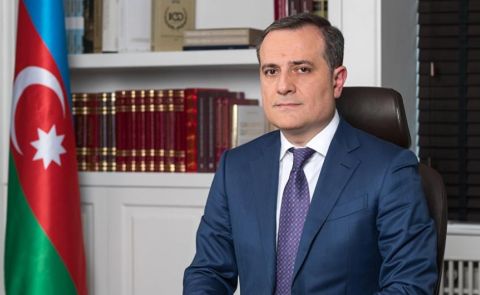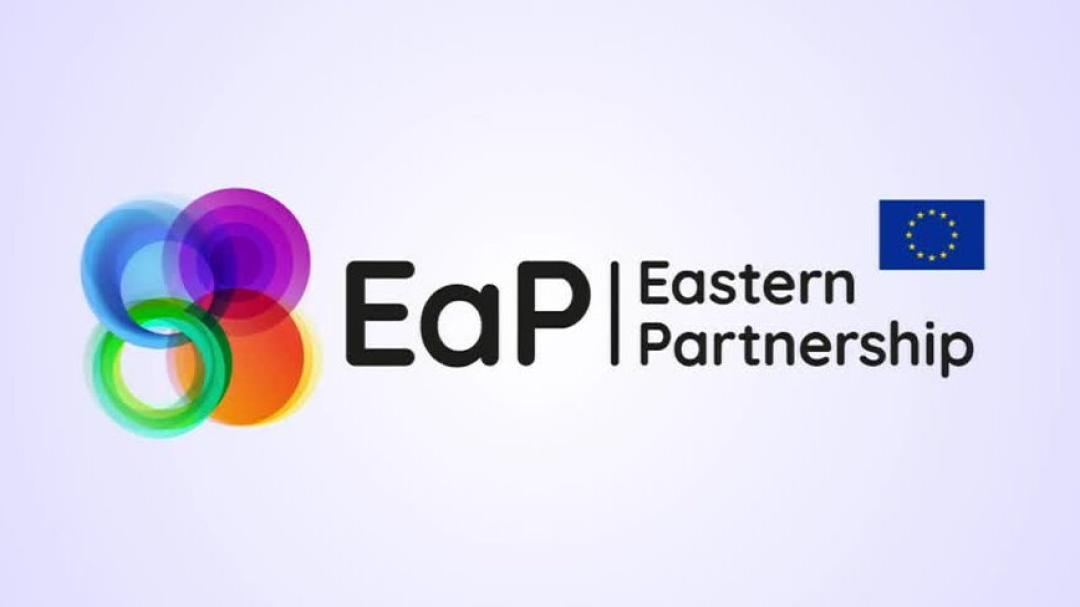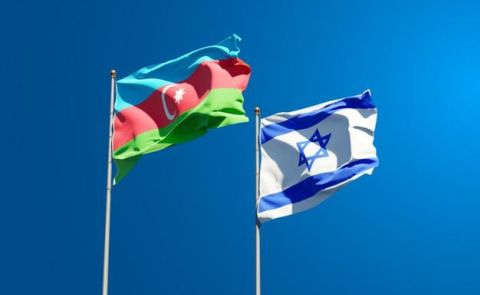
The Eastern Partnership beyond 2020. Back to the future?

Contributed by Anna Barseghyan, Armenian political analyst specialized in European Neighborhood Policy.
 In March 2020, the EU introduced a new approach towards Eastern Partnership (EaP) countries- Armenia, Azerbaijan, Georgia, Moldova, Belarus, and Ukraine. The Eastern Partnership Beyond 2020: Reinforcing Resilience, is meant to be the foundation of the EU’s policy towards its eastern neighbours. This document encompasses the main principles and approaches of the EU’s global strategy for 2016 and the revision of the European Neighborhood Policy from 2015. They focus on increased public accountability, advanced human rights, and local development.
In March 2020, the EU introduced a new approach towards Eastern Partnership (EaP) countries- Armenia, Azerbaijan, Georgia, Moldova, Belarus, and Ukraine. The Eastern Partnership Beyond 2020: Reinforcing Resilience, is meant to be the foundation of the EU’s policy towards its eastern neighbours. This document encompasses the main principles and approaches of the EU’s global strategy for 2016 and the revision of the European Neighborhood Policy from 2015. They focus on increased public accountability, advanced human rights, and local development.
It has been 10 years since the implementation of the Eastern Partnership as a framework of relations between the European Union and its 6 neighbours. During these 10 years, due to the unique platform, these 6 countries have an exceptional opportunity to go beyond a simple partnership and develop strong relations. Based on previous mistakes and accomplishments, the EU adopted a new vision towards the Eastern Partnership states. Despite the coronavirus outbreak, the European Commission has decided to adopt the document, which is called the Eastern Partnership Beyond 2020: Reinforcing Resilience - an eastern partnership that delivers for all.
From the headlines, it’s obvious there is a direct line between the document and the revision of the European Neighbourhood Policy which was adopted in 2015 by the EU and its partner countries. In the revision, greater ownership, enhanced focus and greater flexibility are the main objectives. The 2016 EU global strategy revolved around the concept of resilience. Resilience, here, means the ability of states and societies to reform, thus withstanding and recovering from internal and external crises.
Where is the focus?
The EaP beyond 2020 has 5 flexible and connected long-term policy objectives. The 5 objectives are:
1. Working together for resilient, sustainable and integrated economies;
2. Working together for accountable institutions, the rule of law, and security;
3. Working together towards environmental and climate change resilience;
4. Working together towards a concrete digital transformation;
5. Working together for fair and inclusive societies;
Each objective has a slogan. There is a need to discuss each of them thoroughly and examine their nuances.
A Partnership that CREATES
Under this slogan, the EU is trying to strengthen the economy of its partner countries, to meet citizens’ expectations, reduce inequality, and make partner countries places where people want to build their futures. One of the important motivators for economic development, regional integration, and trade and mobility, is the connectivity of EaP countries between each other and the EU. For the EU, it is crucial to ensure the prosperity of people living in partner countries so it will be possible to reduce illegal migration and build an outer ring of its “prosperous zone.” To maintain sustainable and integrated economies, the EU intends to increase trade using regional and bilateral integration formats. One of the approaches is the focus on the legal frameworks that shape relations with partner states. Among them are the Association Agreements with Deep and Comprehensive Free Trade Areas, and other trade agreement implementations which will maximize benefits. The stress of economic changes will be on structural reformations with the goal of improved access to finance and support for SMEs - particularly women and young entrepreneurs - to foster growth and investment. The EU will help to improve interconnections by investing in infrastructures of the transport sector, energy production, and digital transformation. The emphasis will be for people (especially youth) who will have an easier time connecting with private sector requirements for education, research, and innovation.
A Partnership that PROTECTS
This is supposed to be the pillar where the democratization of the state institution will help to improve governance, successfully fight against corruption and organized crime, achieve rule of law, and foster a respect for human rights. However, wording matters. In the document, the term democracy is avoided. The EU’s incentive-based approach hints at a more-for-more approach. It suggests that partner countries who are more engaged in reforms will benefit more. The EU will continue cooperation with the EU Civil Protection Mechanism to enhance prevention, preparedness and response to natural and human-made disasters. Security dialogues and cooperation are also mentioned.
A Partnership that GREENS
The real innovation of the plan is the environmental component. As the European Green Deal came into reality, the EU started to stress the importance of environmental and climate change challenges. These specify requirements of urgent action by the EU and their partner countries. It is notable that the EU doesn’t suggest any new mechanism for climate neutrality, but instead places emphasis on a joint responsibility to fulfil nationally determined contributions as outlined by the Paris Agreement. The EU suggests working together for the transformation of the region into a fair and prosperous society, with modern, resource-efficient, clean, circular and competitive economies. The EU places importance on developing new green jobs and economic opportunities linked to green transitions in an effort to halt the loss of biodiversity. Investment in environmental governance and raising awareness will be in the focus of the EU initiative, which will try to accelerate the shift to sustainable and smart mobility.
A Partnership that CONNECTS
Under this slogan, the EU is trying to help the modernization of economies, and digitalization of businesses. The Strategy on Shaping Europe’s Digital Future calls for a strong digital presence in the EU’s neighbourhood to enable growth and drive sustainable development. As a further step, the EU will invest further in the digital transformation of partner countries and will aim to extend benefits such as the Digital Single Market, support the implementation of roaming and spectrum agreements among partner countries, and strengthen e-governance in the EaP regions to increase the efficiency, transparency and accountability for public administrations and facilitating reforms.
A Partnership that EMPOWERS
Last, but not least, is support for developing resilient, fair, and inclusive societies in partner countries. The EU’s vision is to empower civil society organisations - particularly grass-roots organisations and youth - to meaningfully engage in policy-making, and promote reforms and public accountability, support free and fair conditions for the independent media, establish access to accurate and fact-based information, ensure mobility and people-to-people contacts in a secure and well-managed environment, and offer support to vulnerable migrants and refugees.
Main Principles and Approaches
In a nutshell, the EU’s new Commission is continuing the policy of the predecessors. They don’t show an explicit ambition to intervene in the Eastern Partnership regions. However, it continues to modernise and “Europeanise” the economies and the governing systems of all 6 countries. Except for resilience, which is the core of the strategy, there are additional guiding principles which were inherited from the EU’s Global Strategy and the 2015 Revision of the European Neighborhood Policy. Among the principles are increased differentiation, greater ownership, enhanced focus and greater flexibility for each member country. It means there is no universal approach. At the same time, the EU stops considering the Eastern Partnership countries as a region; rather it is a cluster of states, each of which has different ambitions and goals. So bilateral cooperation remains the main way to ensure a tailor-made approach. The implementation of bilateral agreements will be sped up and complemented with deeper sectoral cooperation and exchange between interested partner countries. Another approach is the incentive-based initiatives that define priorities, precise objectives, and detailed and verifiable benchmarks.
Geopolitics or no?
The question of the EU’s enlargement and neighbourhood policy has been one of the central features of the Union since it began. With launching the European Neighborhood Policy, the EU’s dream was to build “a ring of friends” from the Caucasus to the Sahara. However, the conflicts in these regions and the Ukrainian crisis made experts describe the region as the ring of fire. Russia’s foreign policy, which is still led by the principles of the Cold War, sees the EU’s actions as direct interventions to its zone of influence. Russia sees it as a geopolitical battle where there are winners and losers. The states who were brave enough to sign the Association Agreement and DCFTA-s also have aspirations of membership. Among them are Moldova, Ukraine and Georgia. Georgia and Ukraine had an open confrontation with Russia and insisted on the prospect of membership in the EU and NATO. However, their expectations are in this case void as enlargement is not a priority for the EU. Now the EU’s discourse revolves around the membership of the Balkan States and post-Brexit discussions and internal problems. Because of this dynamic, the EU will not want to engage in new “adventures’’. The document also proves that it doesn’t have geopolitical ambitions. There is no hint about the geopolitical significance of the EaP region. However, this is just the explicit side of the document.
Reading between the lines shows that in reality the EU still has the geopolitical considerations in the document. The geopolitical objective of the EU is to assist in the emergence of a belt of successful countries between the EU and Russia, and that such policy in a longer perspective would also help Russia to transform. Furthermore, the EU is going to continue its projects which have a geopolitical value such as the Southern Gas Corridor.
The EU is gradually winning the economic battle as the EaP states diversify their economies. The EU is the first trading partner for four partner countries (Azerbaijan, Georgia, Moldova and Ukraine), while for Armenia and Belarus, the EU is the second-biggest trading partner. These trade relations have also led to diversification in exports of goods from partner countries, and to their better integration in global value chains. The number of companies exporting to the EU from Georgia has increased by 46%, from Moldova by 48% and from Ukraine by 24%. This clearly reflects the mutual benefits of the EaP.
The most disappointing part of the document is in the absence of the democratisation measures. Since 2016 when the principled pragmatism became the motto of the EU, thus democracy promotion lost its role as the primary objective. In the whole document, the word democracy is mentioned only 3 times. It’s a regress from the initial goals that the EU had by launching the EaP. Monetary is not enough to transform the region. The EU should have a policy-based approach which can significantly contribute to the democratic conversion of the EaP countries. Otherwise, it is business as usual.
Focus on Armenia
In 2013 Armenia had to quit the perspective of an associated relationship with the EU and was forced to join the Eurasian Customs Union. However, in 2017, in the scope of the Eastern Partnership, the EU and Armenia signed the Comprehensive and Enhanced Partnership Agreement which ensures a wide scope of cooperation. The Eastern Partnership is a life jacket for Armenia not to sink in the Eurasian bog. The EaP has already had tangible results in the daily lives of Armenians. For instance, since 2009 the European Union has loaned companies in Armenia €500 million, supported 25,000 enterprises and created 2,500 new jobs. And of course, the value of the EU is indispensable in the democratisation process of Armenia, case in point the Velvet Revolution.
As Armenia doesn’t have any membership aspirations, the document is a perfect background to foster ties with the EU which can noticeably change the lives of the ordinary citizens. Armenia can be the direct beneficiary of the objectives mentioned in the document, specifically in relation to fostering a resilient economy, sustainable growth, empowered youth, and a digitized governing system.
For the upcoming period, Armenia will need EU support in the judicial reform process which is a top priority as specified by the document. It reads “Future reforms should be based on alignment with European standards. There should be a holistic approach that covers prosecution and law enforcement services. The independence and accountability of the judiciary and prosecution are essential, in a system of checks and balances, to ensure that all state institutions abide by the law and that citizens have access to justice and can exercise their rights fully.’’
An Associate Professor of the Center for European Studies, Narek Galstyan sees the process as a part of the bigger picture. He mentioned, “[t]he EU has a comprehensive approach towards the judicial reforms, it sees the process as part of the reformation of the state system rather than just one institution. The judicial reforms itself will not have a direct effect on the relations. The direct influence will [be] the transformation of the political regime. When the conflict between 3 branches of government is resolved, the governing system will enter the phase of state policymaking. Overall, the judicial reforms will influence the EU-Armenian relations positively. First, it will increase the EU’s trust and reliability towards Armenia. Second, it will strengthen the trust of European investors. But everything depends on Armenia, how it will have effective governance, close to EU standards.”
The EU’s head of delegation in Armenia ambassador Andrea Wiktorin welcomed the process and appreciated the efforts made by the government. “And in this process the EU can have a crucial role to help Armenia with the consultations, sharing its experience. For the young democracies like Armenia sometimes it’s hard to keep the balance and not to cross the border of authoritarianism. That’s why the cooperation with the EU as a normative power can drastically improve the situation and make it smoother and more democratic. For the revolutionary government of Armenia, it is essential not to lose the trust and the support of the EU. The tight cooperation with the EU will help Armenia to move on with the democratic path.”
The founding director of the Regional Studies Center Richard Giragosian commented on the judicial reforms : “For the past several months, a simmering political conflict between the Armenian government and the country’s Constitutional Court devolved into a personal confrontation between Prime Minister Nikol Pashinyan and Constitutional Court Chairman Hrayr Tovmasyan. This ‘court crisis’ standoff has now reached its apex, culminating in the Armenian parliament’s 6 February decision to hold a national referendum on a set of constitutional amendments. Although initially set for 5 April and now postponed due to the coronavirus crisis, the constitutional referendum will seek the removal of seven justices on the nine-member constitutional court who were appointed by the previous government,” he said.
“In terms of the broader implications of the constitutional referendum on Armenia’s relationship with the European Union, there is an interesting paradox. This paradox is evident in the fact that ties between the EU and a clearly more democratic Armenian government, which came to power in a significantly non-violent victory of “people power” that was very much a reaffirmation of European values and ideals, are deepening and developing rapidly. But despite trepidation over the manner of judicial reform, i.e. the intent of the referendum, the EU is neither in a position to provide assistance that the democratic Armenian government does not need, nor solid moral position to judge Armenia. It is especially difficult to condemn a national vote through referendum in the wake of a serious setback to liberal democracy within the EU itself (the Hungarian case). Thus, the paradox is that the EU has little influence and even less of a role to play regarding this issue,’’ he added.
The implementation of the EaP document can face several challenges in Armenia. First and foremost, the possible threat from external actors. As Armenia is the member of the Russian led Eurasian Custom Union it has to give priority to implementing the rules of that Union. Thus, there can be some contradictions on the way of creating a resilient economy by the help of the EU. Moreover, Russia will not want to let the EU increase its soft power influence over Armenia. With the help of the EU, the Armenian economy, society and the political system is transforming and moving away from its post-soviet past. Russia will not take the potential threat of further EU influence into Armenia lightly. The implementation of the EaP document will probably be hindered by some form of Russian intervention.
Another potential challenge is environmental and climate resilience. Armenia has huge energy dependence on Russia (electricity, gas and nuclear power) and the EU’s plan for the green investments for energy efficiency does not match Russia’s objectives and interests. By the same token, Armenia’s economy is highly dependent on the revenues of the mining sector which is the main source of the environmental damages. And the EU’s “green’’ plans will not be highly effective unless it has imperative character.
An additional challenge can be the upcoming financial crisis. After the outbreak of the coronavirus, the emergence of the financial crisis is unavoidable. It is predicted that the governments will be focused on overcoming the devastating results of the economic crisis rather than implementing the obligations within the scope of the EaP. At the same time, the crisis is also an opportunity. Digitalization is more crucial than ever, and the Armenian government will welcome EU support regarding the modernization and the digitalisation of the economy. In this regard, the EU’s support will be indispensable to strengthen the cyber resilience of Armenia. The development of robust legal, policy and operational cybersecurity frameworks in Armenia will be necessary steps based on EU legislation and best practices, including the EU’s cybersecurity certification framework.
Despite the challenges, cooperation with the EU is crucial for Armenia to not be influenced by the membership of the authoritarian countries’ club (Eurasian Custom Union) and to ensure the continuity of the democratic reforms. It is also vital to boost the development of the SME’s, to achieve gender equality, to reduce unnecessary bureaucracy, to provide opportunities for the youth education and mobility and to improve the life of the ordinary citizens.
See Also


Nordic-Baltic Delegation Meets Armenian Leaders to Discuss Regional Cooperation and Peace

Azerbaijan Strengthens Energy Partnerships with Multiple Countries

BP Strengthens Presence in Azerbaijan’s Offshore Energy Sector

Netanyahu’s Letter to Aliyev: Mutual Trust, Solidarity Following Hamas Attacks, Facilitating Dialogue Between Israel and Türkiye

